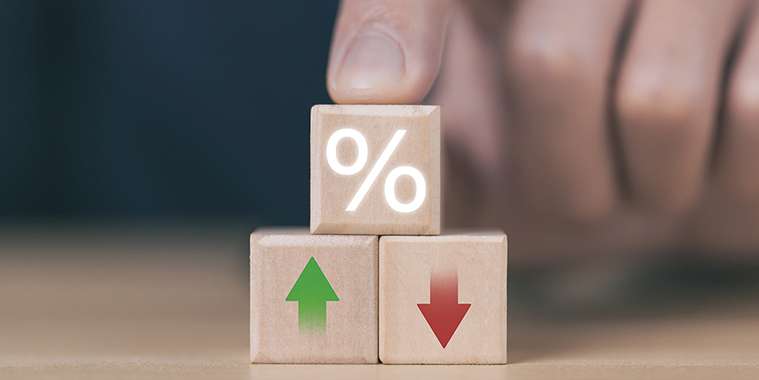“There is a structural lack of supply in the Canadian housing market.”
That was the analysis heard on October 25 from Carolyn Rogers, Senior Deputy Governor of the Bank of Canada (BoC), during the much-anticipated interest rate announcement. Rogers noted the BoC is not “seeing the decline in house prices that we would expect” given higher interest rates.
“Normally, house prices move pretty lockstep with interest rate increases. Most Canadians buy houses with credit, so they’re one of the first things that respond to monetary policy,” said Rogers. “So, really, until we address that supply issue, interest rates on their own are not going to help us get back to a housing affordability situation.”
The BoC announced that, once again, interest rates would hold at 5% — the second time in a row they’ve made that announcement after nearly two years of rate hikes. Gone are the days of supremely low rates that allowed new buyers to enter the market during the height of the pandemic, and those buyers are now growing increasingly concerned as their mortgage term renewal periods approach.
We spoke with Ryan Biln, an economist with the Canadian Real Estate Association (CREA), to get his thoughts on the announcement, and what it means for Canadian home buyers, sellers and owners.
An expert’s take
“I wasn’t surprised to see the Bank of Canada hold,” said Biln after the announcement. With economic growth weakening, and a slower housing market, Biln notes it’s still too early to assess the impact of previous rate hikes. The other key factor is inflation which, while it has eased somewhat from recent levels, is still higher than desired.
However, that doesn’t mean a third hold is coming before year end. With one more announcement left in 2023, Biln isn’t ruling out additional increases.
“What was notable was the announcement mentioned that despite keeping rates on hold, the Governing Council has become concerned that progress towards price stability has slowed and inflationary risks have increased, which raises the possibility for future rate hikes, if needed,” Biln explained.
The good news, said Biln, is we’re unlikely to see rises of 50 or 100 base points (0.5% to 1%) at a time now, which we had seen previously. Inflation is higher than desired, but for consistency, a raise or cut of 25 base points, or a quarter of a percent, are more likely. In short, while there are still unknown variables and both domestic and international factors that can impact inflation, when it comes to rate changes things may be a bit more manageable for borrowers.
The news for buyers and sellers
So what does a steady interest rate mean for home buyers and sellers, especially heading into 2024?
Well, the prime rate is staying the same at 7.2%, so while many borrowers and those up for renewal are already heavily impacted by higher rates than even two years ago, they’re unlikely to see further shock. As Biln explained, “unless something drastic happens to the global economy, it looks like the days of ‘rock bottom rates’ are over, and new borrowers will have to adjust to that reality.
“The challenging part is rates have already moved up so much since March 2022 and that’s affected a lot of variable rate mortgage holders, borrowers who are renewing, or those looking to get into the market because the rate hikes happened at such a rapid pace and rather unexpectedly,” Biln told us.
It will also likely be a challenge for home buyers in the short term. With rates at these levels, first-time buyers are likely continuing to delay their purchase until rates come down, with many frustrated that they did not jump into the market back in 2021.
“It might force those who need to get into the market to change their expectations on what and where they can buy and what is affordable,” Biln explained. “Rate drops aren’t expected until next spring, and the BoC policy rate might not get under 4% until 2025-2026.”
Sellers may also be dissuaded from listing, knowing that even their heightened buying power from sale proceeds will still be hampered by high rates.
The good news, however, is a current uptick in supply could make things slightly easier when it comes to finding a new place to live.
“With more listings hitting the market in most markets across the country, many sellers who are selling with the intention of purchasing another property immediately after could end up having a bigger pool of listings to choose from,” suggested Biln.
Looking forward to 2024
Naturally, the biggest question on everyone’s mind is what this means for Canadian real estate markets heading into a new year. Though Biln still says it’s “too early to tell” what 2024 has in store, he provided some early insight into what we could expect.
“While inflation is growing at around half the pace as it was last summer, it’s still higher than the Bank of Canada’s target range and inflationary risks continue to increase globally,” he said. “I don’t think we’re going to see much change on the sales side of things, but if new listings continue to hit the market at above average rate and start to slowly pile up, we’d see a more balanced market come next spring where potential home buyers would have more inventory to choose from than they had in the last eight years (in most markets).”
As for the BoC, they’re also keeping an eye on the mortgage renewal cycle as the year comes to a close.
“As more households renew their mortgage at a higher rate, it puts downward pressure on spending,” Rogers explained. “They have less money available to spend on other things, that dampens demand, that sort of gets the economy back in balance.”
“We are watching for the financial pressure that comes with that. We usually talk about that more in our Financial System Review — we’ve got an update to that coming in November and you’ll hear more from us on that at that point.”
— Realtor.ca



